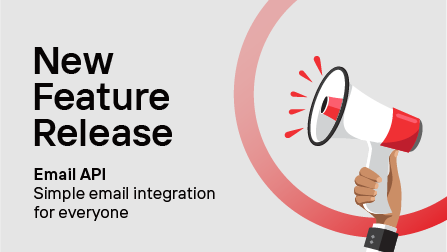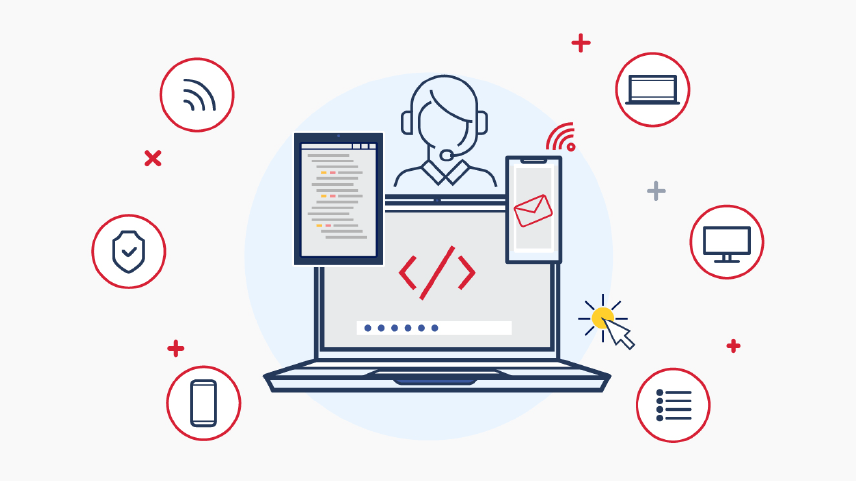Although the CPaaS market is relatively young, its evolution is inevitable in today’s rapidly changing ecosystem. Originally, the focus has been on developers and enabling them to embed communications; whether SMS, voice, or video, in business processes.
While this has worked exceedingly well in the past, the developer-centric modus operandi isn’t inclusive of all business stakeholders and, in many ways, slows down businesses, given the universal problem of developer shortage.
According to the latest study by Salesforce Research, demand for trained and specialized software developers far exceeds the supply. It has become more and more challenging to build and sustain a workforce of talent in the technology sphere.
And thus, the emergence of the Do-It-Yourself (DIY) CPaaS model in the industry has opened the world of CPaaS to more than just developers, giving more control to product and project managers to steer business flows as they fit.
By further deconstructing the toolset and making operations more visual, these platforms are enabling employees who don’t come from an IT background to support new segments, like the contact center and the Internet of Things.
MEA’s need for CPaaS DIY model
The MEA region has jumped on the bandwagon of innovation and digital transformation; key in our many customers in the banking industry and other industries who have embraced our cloud communication services. The market is strong, with tremendous potential for growth.
What we have discovered through our on-ground sales team and customer success team, is the following:
- MEA enterprises also share the universal problem of the scarcity of developer resources. Securing and retaining software developers to maintain growth remains one of the key challenges for companies.
- Each customer has specific pains and needs that they would like addressed. Diversifying our product portfolio to suit every customer wasn’t a viable and sustainable option for CEQUENS.
- We have found that although there are many underlying commonalities for countries in MEA, the region cannot be painted with one brush. Each country, its citizens, and its regulations are undeniably different in some aspects. Banks in the culturally conservative Saudi Arabia for example have a different set of rules and expectations compared to Egypt, Jordan, or Lebanon.
Thus, CEQUENS has embarked on the visual, DIY CPaaS road, finding many advantages to building and deploying such a model. Our very own R&D team kicked off CEQUENS Workflow Studio: a visual builder and drag and drop tool where customers can build their unique solutions, easily and on their own.
We believed, and still believe, that we have built and developed an innovative tool; one that will simplify enterprises’ daily operations. After all, the bottleneck has been the scarcity of development talent in organizations, which has hindered project’s deployment and execution.
The DIY communication app builder in MEA - How receptive is the audience?
In our Beta version of the Workflow Studio, we have worked side-by-side with customers who have expressed a need and interest in customizing the way they interact with their customers. A startup company in the medical service industry, one with a young and agile workforce, has willingly agreed to test the Workflow Studio.
As we worked along our customer, we developed an understanding of how to successfully kick off the studio. Our partnership yielded many concluding outcomes, some of which are:
- Simplicity is not enough. While we have created a drag and drop model, we have noticed reluctance from our customers to build their own business flow. The technically disinclined are wary of having this much computing power in their hands, given their limited technical expertise and the fact that anything IT related has always been executed by those who have the technical know-how.
- Flexibility is great, just not too much of it. Our customers were very pleased with the tool; they understood how, by using it, they can build the solutions they need, whenever they need it. The major drawback? They get drowned in the multitude of options at their fingertips. We understood then, that training sessions are necessary if the tool is to be of any use.
- Customer education is key. The MEA clients are enthusiastic about the Workflow Studio, but we felt the resistance into adopting the technology. One customer explained the exact flows they need and asked CEQUENS to create it for them via the builder, then to show them how we did it. In other words, they needed to better understand how to build with it, with dedicated support from our team.
Each customer interaction has proven to us time and again that for development and execution of global trends to bear fruit, they need to be tailored to the industry and the region’s needs. Localization, starting from the tool itself to localizing the customer experience, of the CPaaS visual model is imperative to its success.
Read Now: Why Should You Invest in a Communication Platform?
This article was originally published on TADS Blog.


